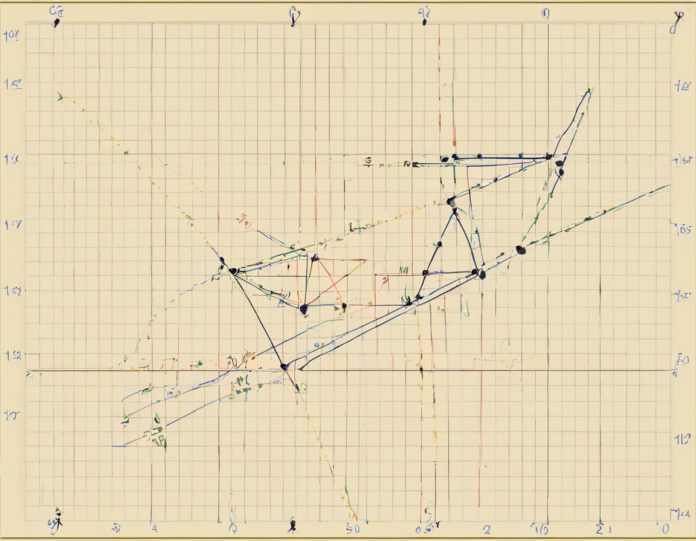In the field of mathematics, specifically in geometry, understanding the concept of calculating perpendicular distance from a line is crucial. Whether you are a student, a professional working with data, or simply a math enthusiast, grasping this concept can be beneficial for various applications. From determining the shortest distance between a point and a line to solving real-world problems in areas such as engineering, physics, and computer science, knowing how to calculate the perpendicular distance from a line is a valuable skill.
In this comprehensive guide, we will delve into the fundamentals of perpendicular distance, explore various methods to calculate it, provide step-by-step examples for better comprehension, and address common questions related to this topic.
Understanding Perpendicular Distance:
Before we dive into the calculations, it’s important to grasp the concept of perpendicular distance. The perpendicular distance from a point to a line is the shortest distance between the point and the line. It is a line segment that begins at the point and is perpendicular to the line. This distance forms a right angle with the line, hence the term “perpendicular distance.”
Methods to Calculate Perpendicular Distance from a Line:
There are several methods to calculate the perpendicular distance from a point to a line. Some of the common techniques include:
1. Using the Formula:
One of the most straightforward ways to calculate the perpendicular distance is by using the formula:
[d = \frac{|ax_1 + by_1 + c|}{\sqrt{a^2 + b^2}}]
Where:
– (d) is the perpendicular distance.
– (a) and (b) are the coefficients of the line’s equation (ax + by + c = 0).
– (x_1) and (y_1) are the coordinates of the point.
2. Vector Method:
Another approach involves using vectors to calculate the perpendicular distance. By finding the vector representation of the line and the position vector of the point, you can determine the perpendicular distance using vector operations.
3. Coordinate Geometry:
In coordinate geometry, you can find the perpendicular distance by considering the slope of the line and the coordinates of the point. Utilizing the slope-intercept form of the line’s equation and the distance formula, you can calculate the perpendicular distance efficiently.
Step-by-Step Example:
Let’s walk through a step-by-step example to calculate the perpendicular distance from the point ((3, 4)) to the line (2x – 3y + 6 = 0).
Step 1: Identify the values of (a), (b), and (c) from the equation of the line:
- (a = 2)
- (b = -3)
- (c = 6)
Step 2: Substitute the values into the formula:
[d = \frac{|2(3) – 3(4) + 6|}{\sqrt{2^2 + (-3)^2}}]
[d = \frac{|6 – 12 + 6|}{\sqrt{4 + 9}}]
[d = \frac{6}{\sqrt{13}} ≈ 1.64]
Therefore, the perpendicular distance from the point ((3, 4)) to the line (2x – 3y + 6 = 0) is approximately 1.64 units.
FAQs (Frequently Asked Questions):
Q1: What is the significance of calculating the perpendicular distance from a line?
A1: Understanding the perpendicular distance helps determine the shortest distance between a point and a line, which is crucial in various mathematical and real-world applications.
Q2: Can the perpendicular distance be negative?
A2: No, the perpendicular distance is always a positive value, representing the shortest distance between the point and the line.
Q3: How is the perpendicular distance related to the slope of the line?
A3: The slope of the line is used to calculate the perpendicular distance, as it helps determine the direction of the line with respect to the point.
Q4: In which fields is the concept of perpendicular distance commonly used?
A4: Perpendicular distance calculations are prevalent in geometry, physics, engineering, computer graphics, and various scientific disciplines.
Q5: Are there alternative methods to calculate perpendicular distance apart from the ones mentioned in this article?
A5: Yes, various other methods, such as using trigonometry or geometric constructions, can also be employed to calculate perpendicular distance.
In conclusion, mastering the art of calculating perpendicular distance from a line opens up a world of possibilities in mathematics and its applications across diverse fields. Whether you are solving complex geometric problems or analyzing data points in a dataset, understanding how to find the perpendicular distance is a powerful tool in your mathematical arsenal. By utilizing the formulas, methods, and examples outlined in this guide, you can enhance your problem-solving skills and elevate your mathematical proficiency.

